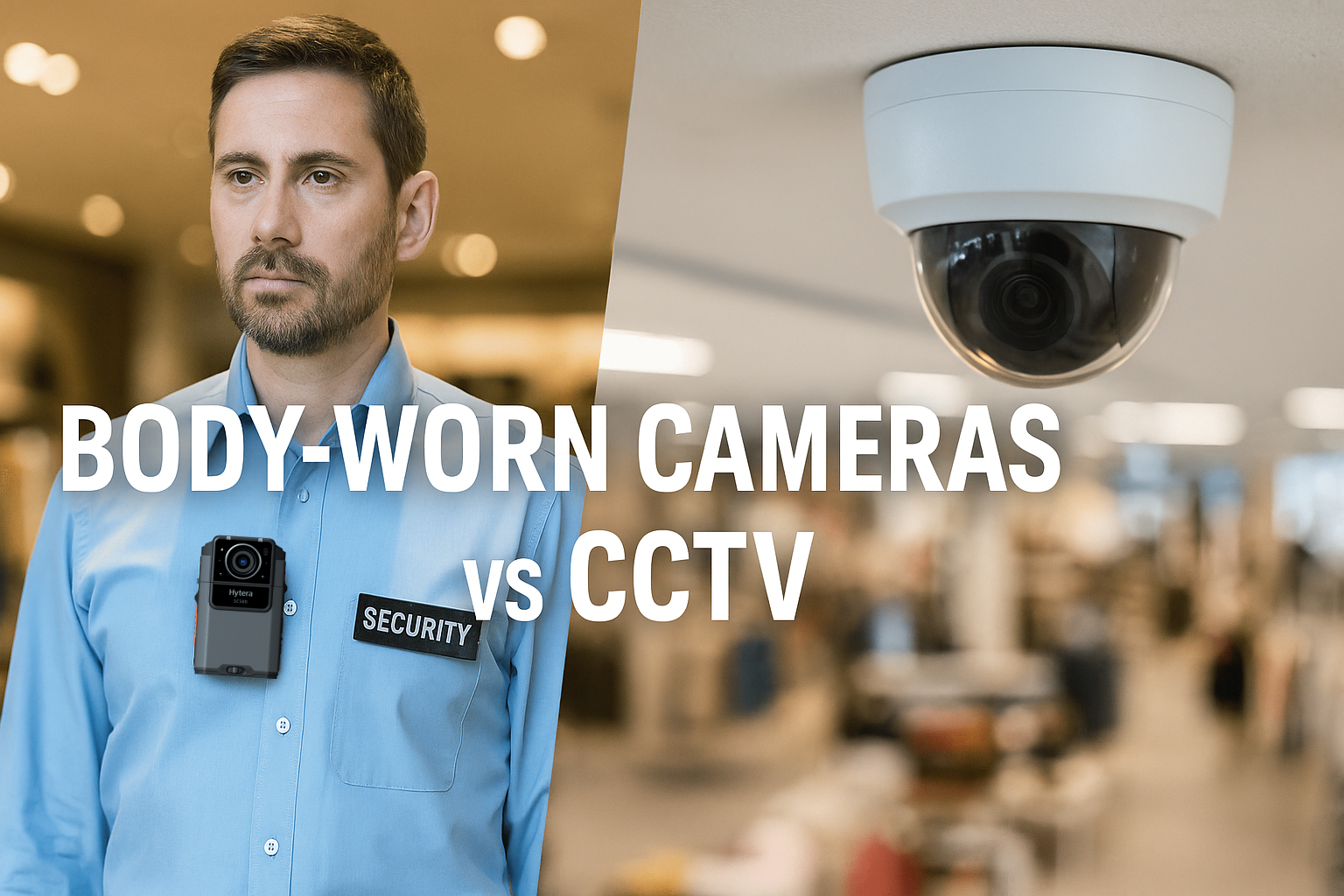Body-Worn Cameras vs CCTV in Retail: Why You Need Both
Bodycam
Let's be real—working in retail today isn't as simple as just scanning barcodes and smiling at customers. Whether you're in a buzzing fashion store or a quiet convenience shop, retail employees face all kinds of situations: aggressive customers, shoplifters, and sometimes even physical threats. I used to work part-time in a mall electronics store, and I still remember the tension when a customer accused a coworker of being “rude” just because he couldn't return a used item without a receipt. Emotions ran high, and there were no cameras near the counter to capture what really happened.
That experience—and countless others like it—highlight the growing need for better protection and transparency in retail. And that brings us to two powerful tools: CCTV and body-worn cameras.

Let's break them down.
CCTV in Retail: Reliable, But Limited
CCTV has been a staple in retail security for decades. It's like the invisible safety net that keeps watch over the store when no one else can.
Pros:
- Deterrent Effect: Most shoplifters will think twice when they see the “You are being recorded” sign.
- Broad Coverage: One camera can monitor large areas like entrances, aisles, or cash registers.
- Evidence for Investigations: CCTV footage helps with post-incident reviews and police reports.
But let's not sugarcoat it—CCTV has its gaps.
Cons:
- Fixed Angles: Cameras are usually mounted high up, so they miss low-angle incidents or what's happening close-up between people.
- Delayed Response: CCTV is mostly useful after something has happened. It doesn't help you in the moment.
- Blind Spots: Corners, storage rooms, or crowded aisles often go unrecorded.
No Audio: Many systems don't record sound, making it hard to understand verbal altercations or threats.
So yes, CCTV is useful. But if you think it can handle everything? Not quite.
Body-Worn Cameras: A New Layer of Protection
This is where body-worn cameras (BWCs) shine—literally. These small, lightweight cameras clip onto employees' uniforms and record interactions in real time, from their point of view.
Pros:
- First-Person Perspective: Body cams capture exactly what the employee sees and hears, giving context to incidents.
- Real-Time De-escalation: People behave differently when they know they're being recorded. In fact, many workers report that just activating the camera diffuses tense situations.
- Mobility & Coverage: Wherever the employee goes—stockroom, back entrance, or the middle of a customer complaint—the camera follows.
- Protects Staff and Customers: It provides evidence that protects workers from false accusations and helps resolve disputes fairly.
And just to put it into perspective: my friend, who manages a supermarket chain, told me how a body-worn camera helped clear a staff member who was accused of “pushing” a customer. The footage showed the customer stumbling on his own—and the staffer actually trying to help. That changed everything.
Cons:
- Privacy Concerns: Some customers may feel uncomfortable being recorded during interactions.
- Battery Life & Storage: Cameras need regular charging and secure data management.
- Employee Training Required: Staff need to know when and how to use the device appropriately.
Still, the advantages far outweigh the concerns—especially when the goal is a safer, more respectful work environment.
That's why more and more retailers are turning to trusted technology partners to build their body camera systems right.
With over 32 years of experience in public safety, Hytera understands how to turn video evidence into something truly actionable. Its Body Camera Solution blends innovative hardware with smart software—bringing together front-line recording, control center integration, and push-to-talk communication.
For the retail industry, this means better evidence management and real-time visualized dispatch, all in one seamless ecosystem.
5Why You Need Body-Worn Cameras Alongside CCTV
So here's the big question: if you already have CCTV, why bother with body-worn cameras?
The answer is simple—they do different jobs. CCTV watches from above. Body cams record from within. When used together, they give a fuller, fairer, and more accurate picture.
Here's what happens when you combine both:
No More He Said, She Said: You get full audio and video context from both fixed and mobile perspectives.
Improved Staff Morale: Workers feel safer and more supported, especially when dealing with difficult customers or unpredictable situations.
Faster Dispute Resolution: Having two perspectives speeds up investigations and reduces time spent on complaints.
But it's not just about the employees—your customers benefit, too.
Shoppers are increasingly aware of their surroundings, especially in busy or high-risk retail environments. When customers see that staff are equipped with body cameras and know the store is under active CCTV monitoring, it sends a clear message: “This place takes safety seriously.”
It discourages disruptive behavior and creates a more peaceful, respectful atmosphere. People feel more comfortable bringing their kids, asking questions, or just browsing without stress.
One frequent customer at a neighborhood store told me, “I used to avoid this place at night. But now that I see staff with cameras and more security, I actually feel safer popping in for late groceries.”
In short, a well-monitored retail space is not just a safer workplace—it's a more welcoming space for everyone.
Final Thoughts
Retail is evolving—and so should the way we protect our people. CCTV has its place, but it's not the full picture. With body-worn cameras, you empower your team to handle challenges with more confidence, clarity, and safety.
Technology alone isn't the answer—but when used thoughtfully, it can make retail a more respectful, secure, and even enjoyable place to work.






